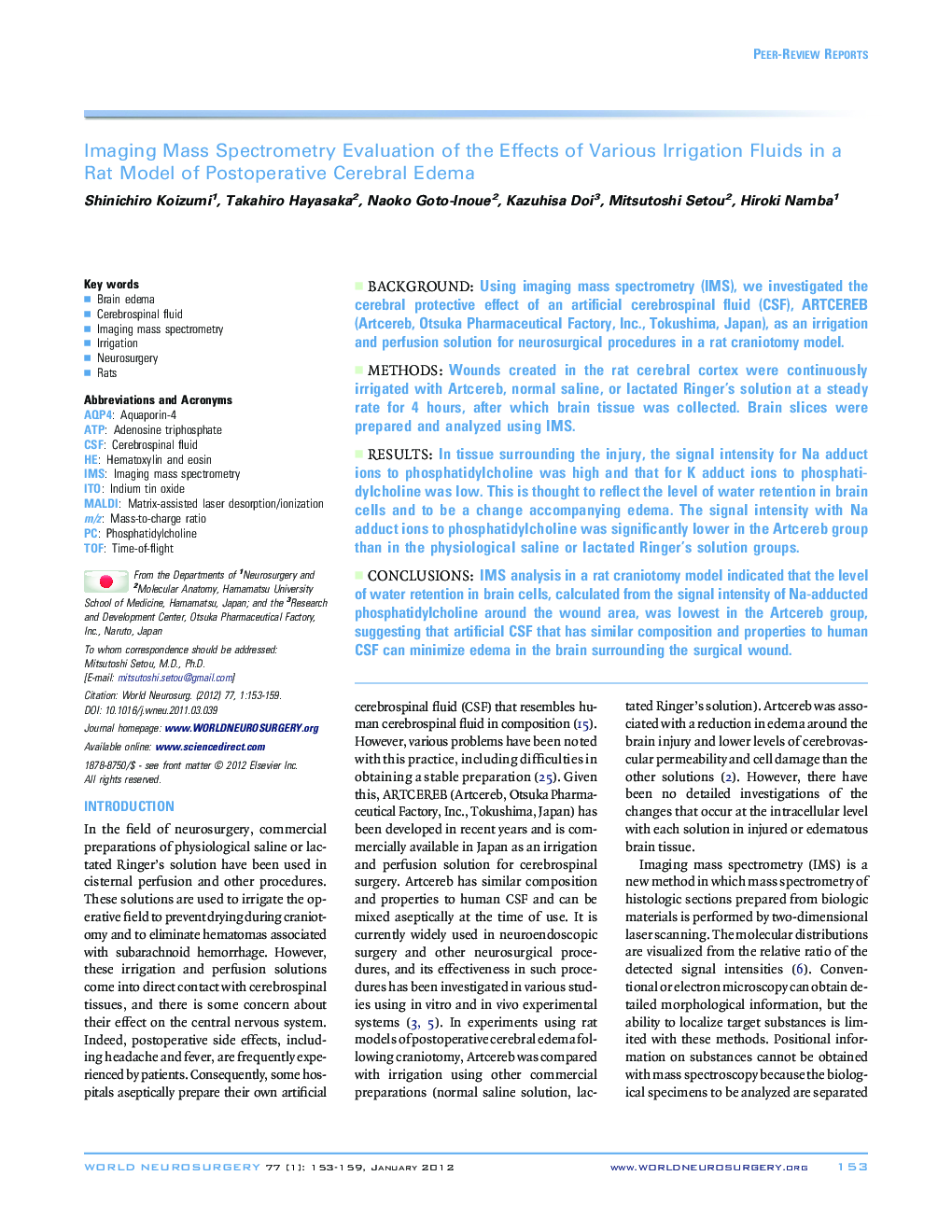| Article ID | Journal | Published Year | Pages | File Type |
|---|---|---|---|---|
| 3096645 | World Neurosurgery | 2012 | 7 Pages |
BackgroundUsing imaging mass spectrometry (IMS), we investigated the cerebral protective effect of an artificial cerebrospinal fluid (CSF), ARTCEREB (Artcereb, Otsuka Pharmaceutical Factory, Inc., Tokushima, Japan), as an irrigation and perfusion solution for neurosurgical procedures in a rat craniotomy model.MethodsWounds created in the rat cerebral cortex were continuously irrigated with Artcereb, normal saline, or lactated Ringer's solution at a steady rate for 4 hours, after which brain tissue was collected. Brain slices were prepared and analyzed using IMS.ResultsIn tissue surrounding the injury, the signal intensity for Na adduct ions to phosphatidylcholine was high and that for K adduct ions to phosphatidylcholine was low. This is thought to reflect the level of water retention in brain cells and to be a change accompanying edema. The signal intensity with Na adduct ions to phosphatidylcholine was significantly lower in the Artcereb group than in the physiological saline or lactated Ringer's solution groups.ConclusionsIMS analysis in a rat craniotomy model indicated that the level of water retention in brain cells, calculated from the signal intensity of Na-adducted phosphatidylcholine around the wound area, was lowest in the Artcereb group, suggesting that artificial CSF that has similar composition and properties to human CSF can minimize edema in the brain surrounding the surgical wound.
